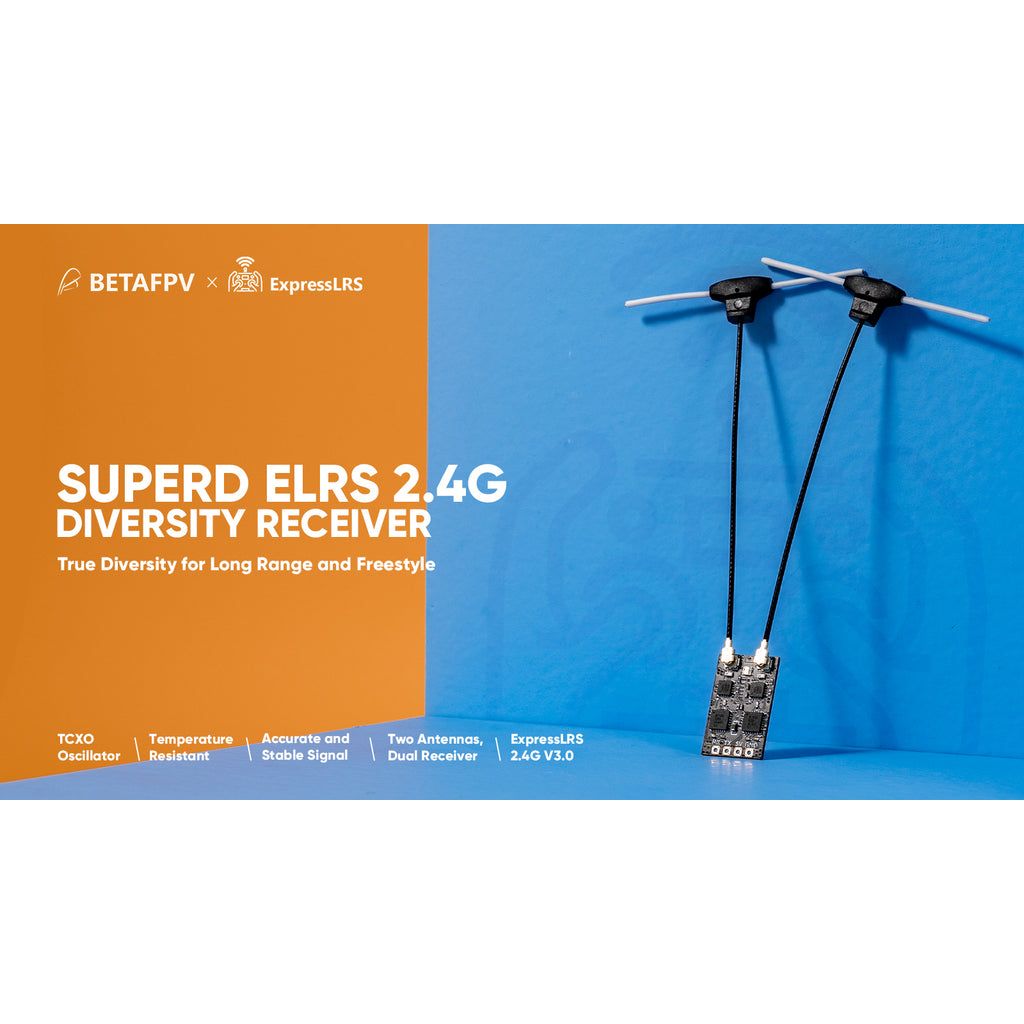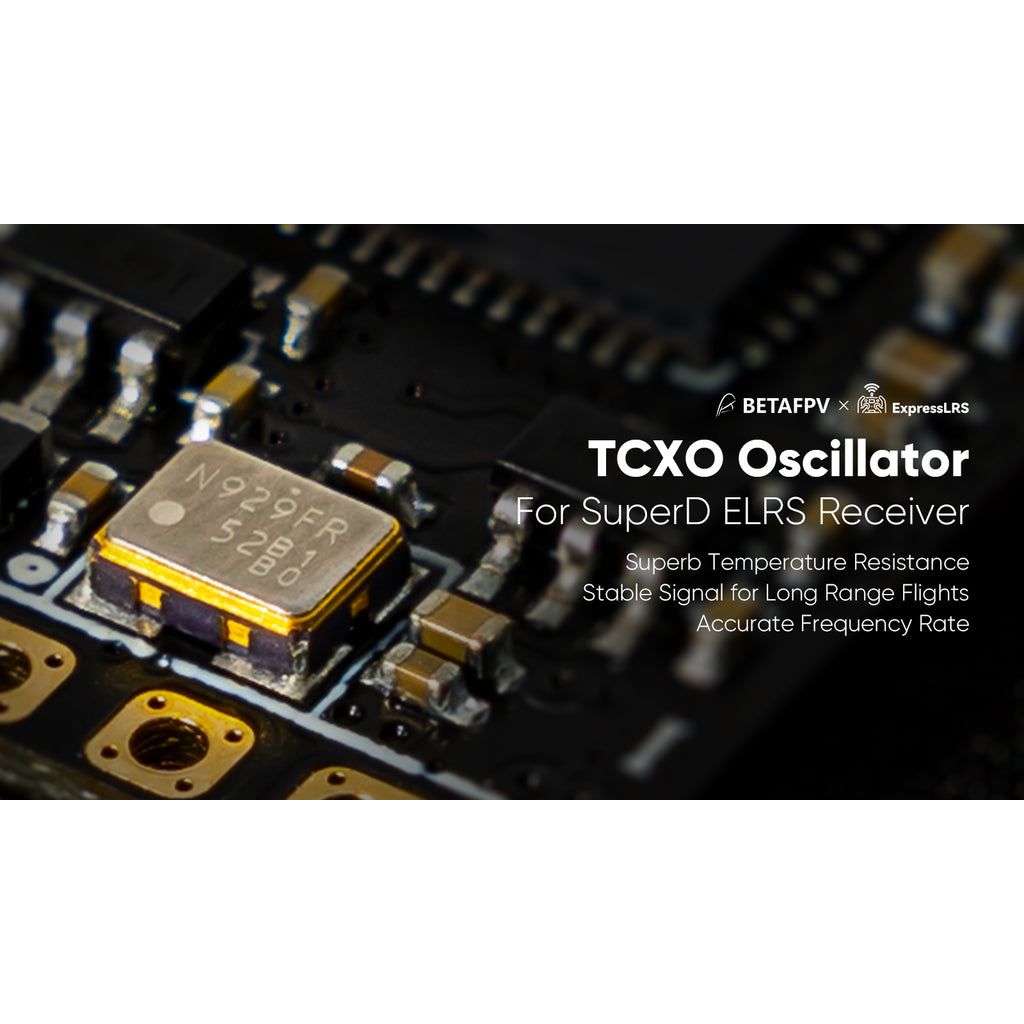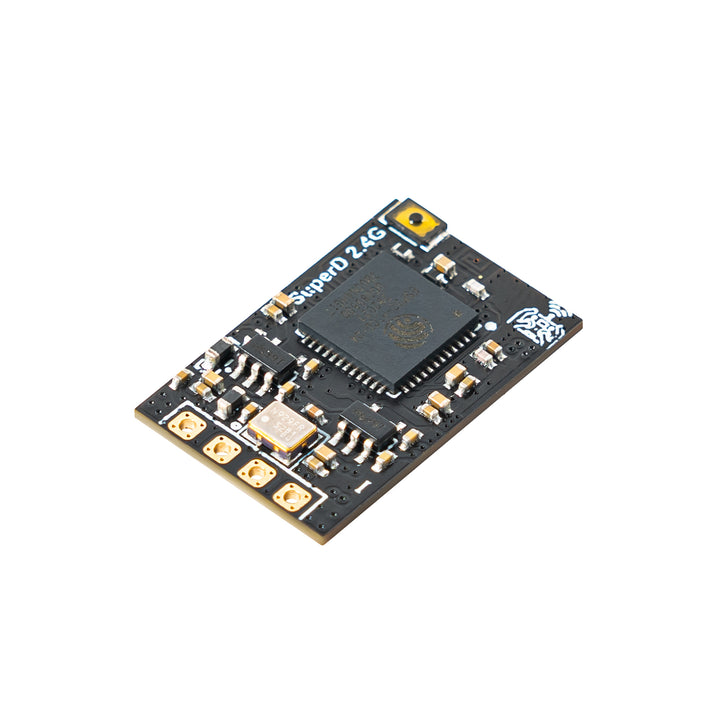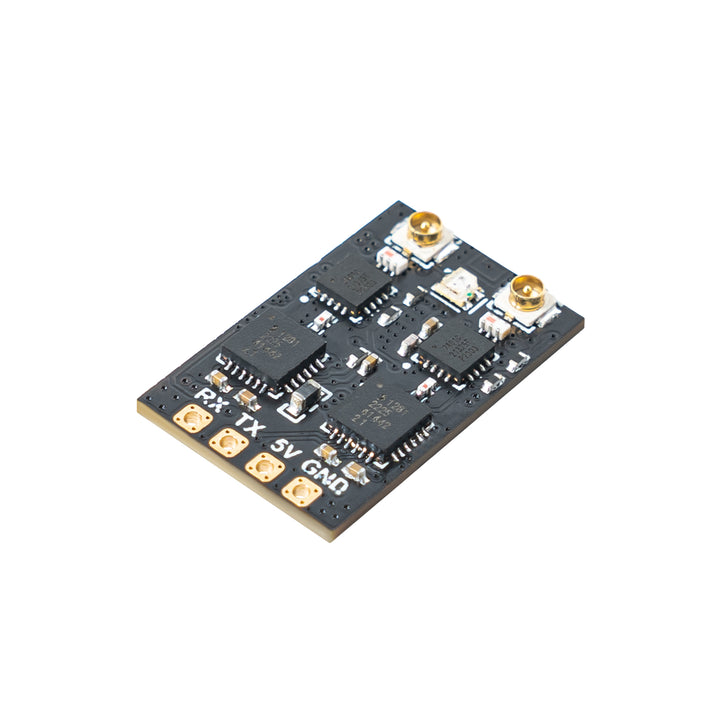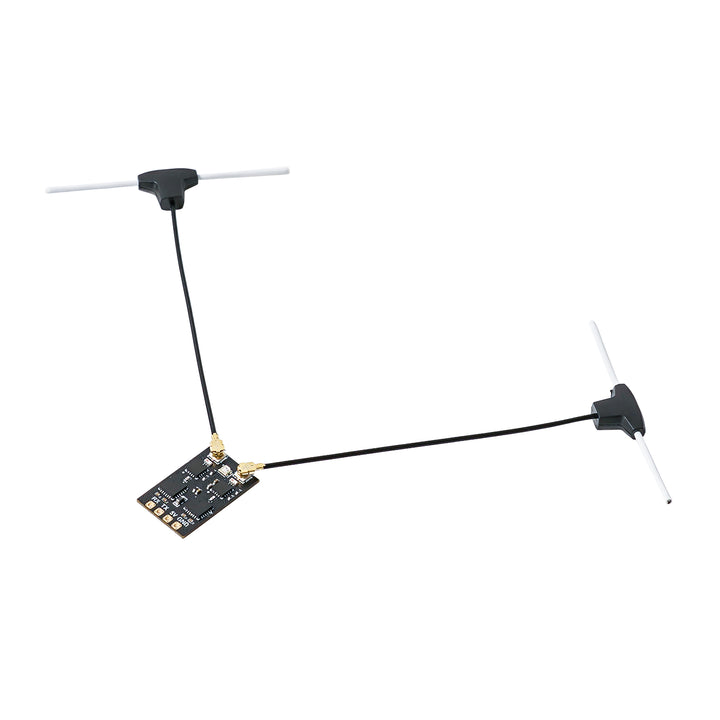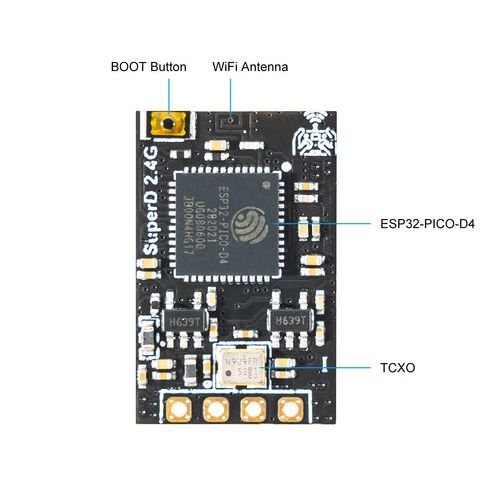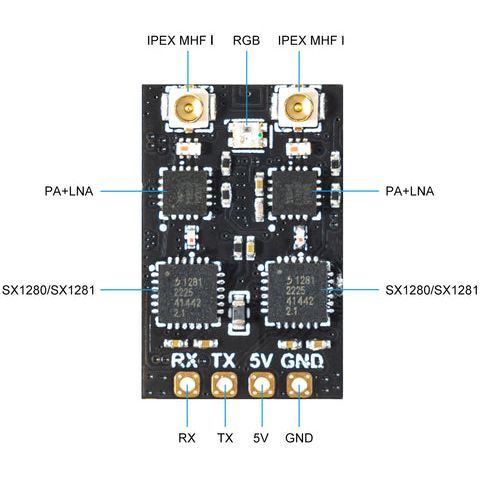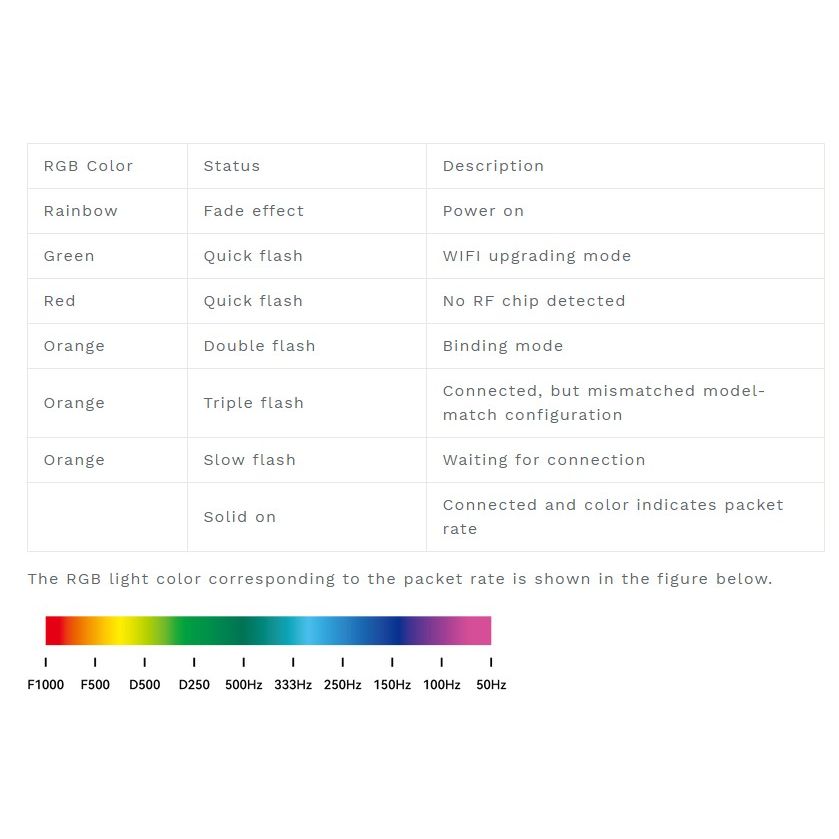BetaFPV SuperD ELRS 2.4G Diversity Receiver
BETAFPV SuperD ELRS 2.4G is the world's first True Diversity Receiver that applies two antennas, dual receiver chains, and TCXO (temperature compensated crystal oscillator) tech, achieving super accurate frequency rate and excellent performance in extreme temperature environments. It greatly fulfills the requirements of reliability for long range flying, aerial photography, or FPV freestyle tricks.
Features:
- A true diversity receiver with two complete RF receiver chains (referring to PA+LNA+SX1280), based on the latest official ExprssLRS. It comes with ExpressLRS V3.0.0 firmware.
- Ultralight weight only 1.1g without the antenna. The receiver board features a reasonable layout and is impeccably clean. Very easy to solder.
- Two Dipole T antennas will create an omnidirectional signal for good signal transmission. Placing the antenna separately and vertically as far part as possible to get a better signal is recommended.
- Not only it is used for FPV drones but also for FPV fixed-wing, or other FPV aircraft. It has superb performance in long range flying.
SPecifications:
- Item: BETAFPV SuperD ELRS 2.4G Diversity Receiver
- MCU: ESP32 PICO D4, dual SX1280 (SX1281)
- Antenna Connector: IPEX MHF 1/U.FL
- RF Frequency: 2.4GHz (2400~2480MHz)
- Telemetry Power: 20dBm (100mW)
- Receiver Protocol: CRSF
- Input Voltage: +5V DC @ “+” pad
- PCB Size: 22mm*14mm
- Weight: 1.1g excluding antenna
First True Diversity Receiver with TCXO
SuperD ELRS 2.4G Diversity Receiver is built-in a TCXO (temperature compensated crystal oscillator), which is shared by two RF chips for a super accurate clock source. The true diversity receiver including two RF chips and PA+LNA will generate a large amount of heat when working. With the high-quality TCXO, it can withstand extreme temperatures with no fear of heat and cold, continuously outputting accurate frequency for long range flight.
Configuration & Bind
ExpressLRS uses the Crossfire serial protocol (AKA CRSF protocol) to communicate between the SuperD diversity receiver and the flight controller board. Take the flight controller using the Betaflight firmware as an example to introduce its wiring and port configuration.
Note: F1000 and F500 are packet rates in FLRC mode, providing faster modulation and lower latency, but at the same time having shorter reception distance than normal Lora mode. This mode is great for racers.
D500 and D250 are packet rates in DVDA (Deja Vu Diversity Aid) mode. This mode works at the F1000 data packet rate of FLRC mode, providing better link connection in the case of complex interference by sending the same data packet multiple times. D500 and D250 indicate that the same data packet is sent twice and four times respectively.
The default firmware of the SuperD diversity receiver uses the ExpressLRS V3.0.0 protocol and has no preset binding phrase. Therefore, the firmware version of the transmitter module must be ExpressLRS V3.0.0 or later versions. Both the receiver and transmitter module should not have any binding phrase.
- Power on and off the SuperD diversity receiver three times with 1 second between each interval continuously to enter the Binding Mode.
- RGB indicator flashes twice quickly on the SuperD diversity receiver, indicating that the receiver is now in Binding Mode.
- Configure remote control or transmitter module to bind with the receiver; If the receiver RGB indicator is solid on, this indicates that the receiver has successfully bound.
Note: After binding once, the receiver will remember the autosaved binding phrase and device. Further restarting of the device will be bound automatically without the need for a rebinding process.
When binding the receiver, the duration for powering on/off should be 1 second each time, making sure the RGB not lighting.
